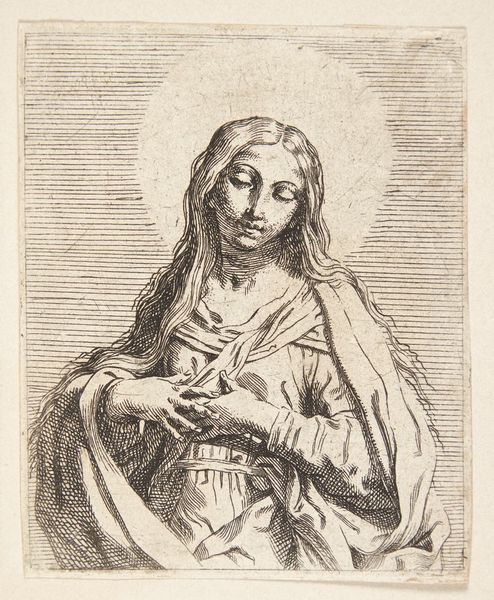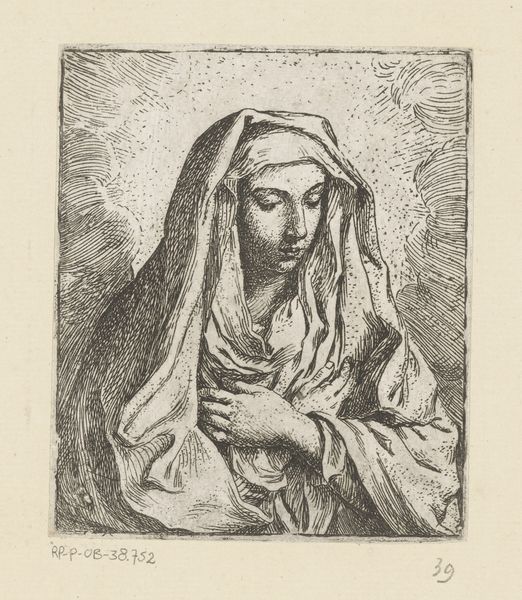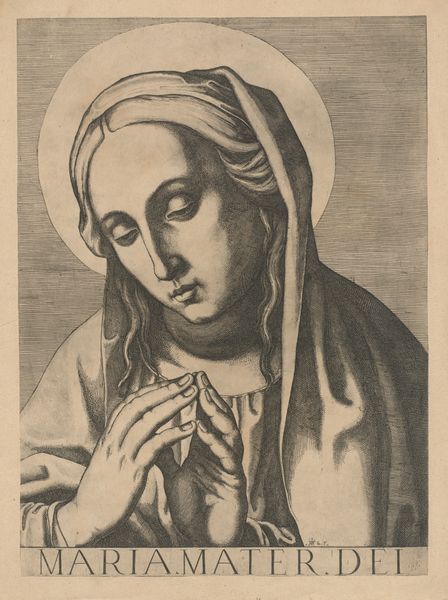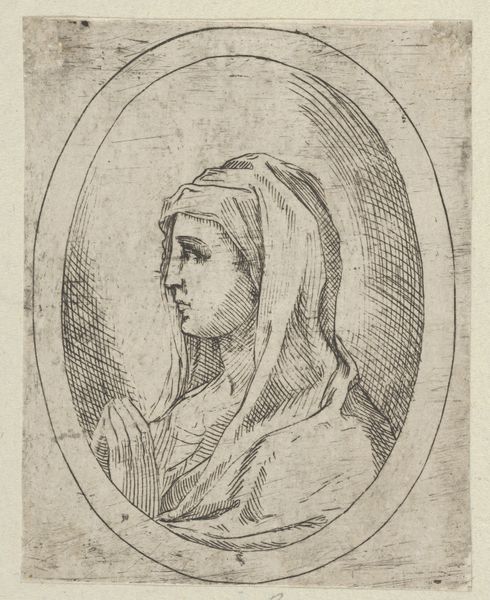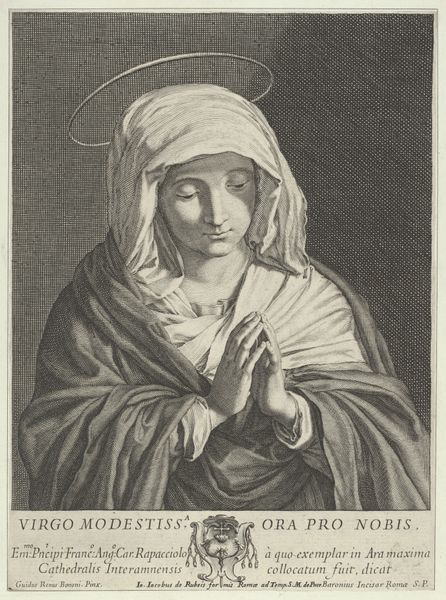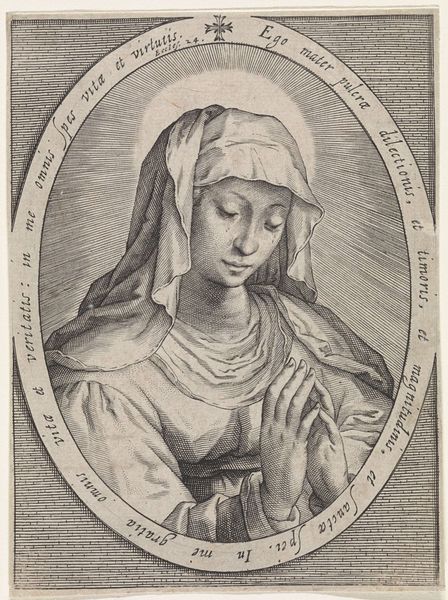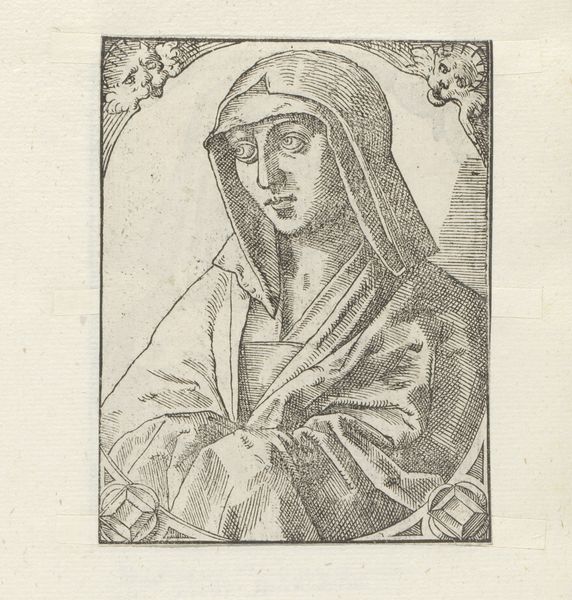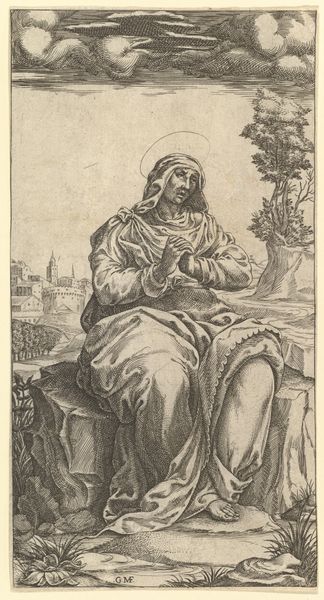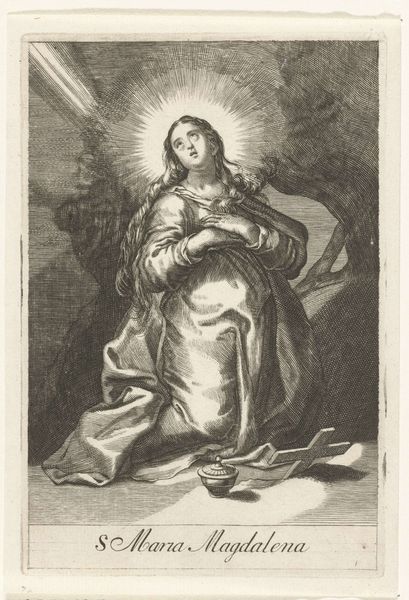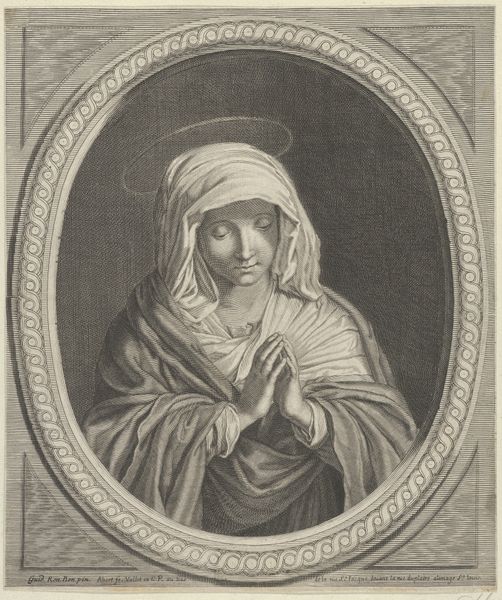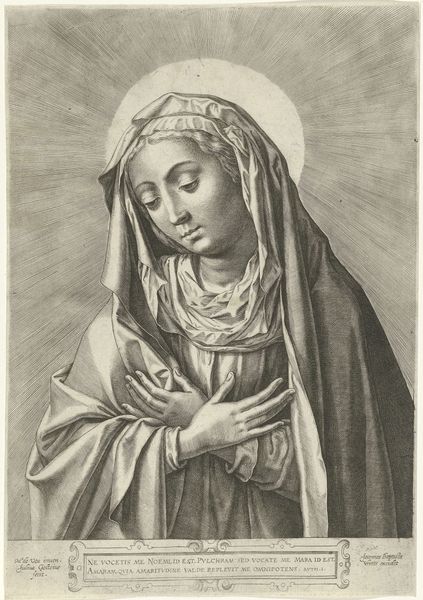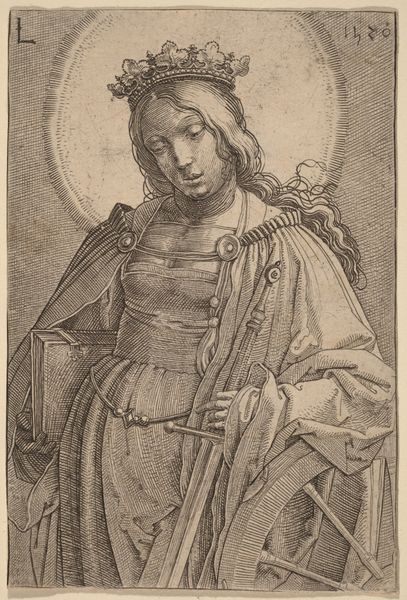
drawing, print, etching
#
drawing
#
baroque
# print
#
etching
#
figuration
#
portrait reference
#
pencil drawing
#
portrait drawing
Dimensions: Sheet (Trimmed): 4 3/4 × 3 1/2 in. (12.1 × 8.9 cm)
Copyright: Public Domain
Curator: Before us is Josef Ferdinand Fromiller's "Head of the Madonna," an etching from 1725. It’s currently held at the Metropolitan Museum of Art. Editor: My first impression is one of profound sorrow. The way her head is bowed, the subtle lines indicating tears perhaps – it’s deeply affecting. There's a weight here, almost tangible, enhanced by the etching’s starkness. Curator: Absolutely. The image adheres to certain conventions of Baroque art which deployed emotionally charged imagery. Its reproduction as a print would mean wider accessibility of the subject for different purposes. Editor: Right, and that head covering, the simple lines somehow speak volumes about humility and devotion. Notice also that radiant background—a halo suggested not by solid form, but radiating lines. Is that typical for depictions of the Madonna in this period? Curator: That radiation is a common artistic convention signifying divinity, often seen in religious iconography across centuries, actually. In the specific cultural and religious climate of the early 18th century, prints such as these also served as tools for devotion, shaping emotional responses and propagating the ideals surrounding the Holy Virgin. Editor: So, it's not just a portrait but an instrument? I am thinking that image served as inspiration. The bowed head, the downturned eyes— these physical cues would allow believers to align their interior emotional state with Mary’s perceived grief, and would carry emotional weight with a population so frequently faced with death and uncertainty. Curator: Exactly, images and representations were a public act, with deep roots in earlier historical representations but adapted for an era defined by wars. They held sociopolitical currency tied into religion. The etching being reproducible underscores that agenda of broad appeal. Editor: That blend of the personal and political—I find it powerful. It’s a poignant look at grief and faith, and also at art used as a symbol of political strength. The etching invites reflection not only on spirituality, but the socio-political powers that molded our perception of those values. Curator: A thought-provoking point that illuminates not just Fromiller’s skill, but the artwork’s multifaceted context.
Comments
No comments
Be the first to comment and join the conversation on the ultimate creative platform.
